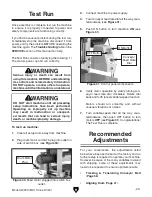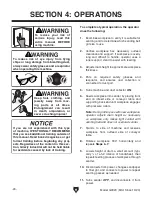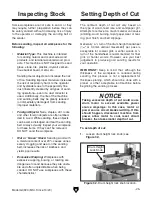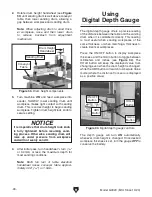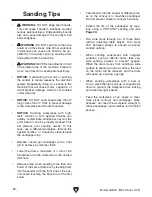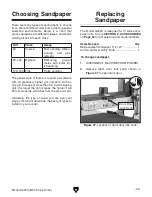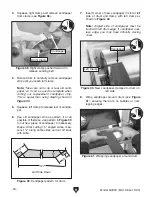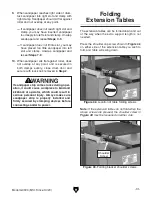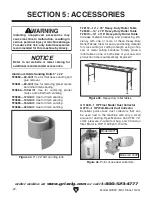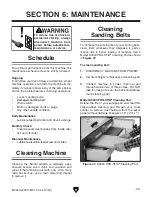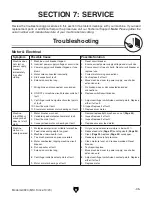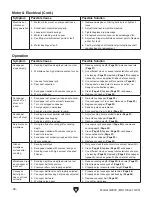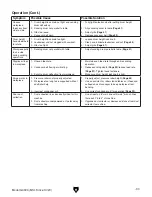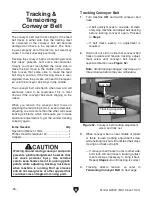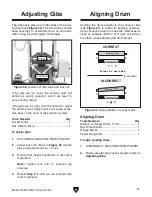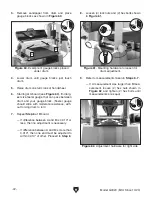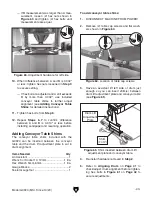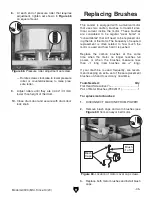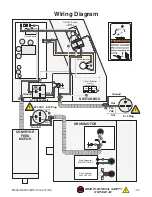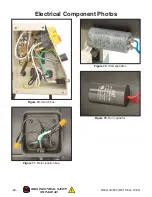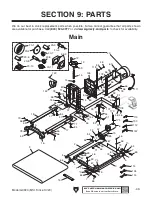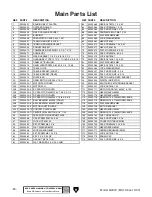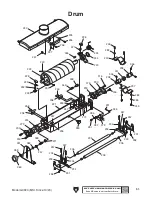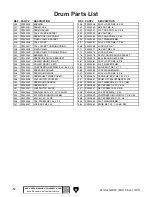
Model G0920 (Mfd. Since 10/20)
-37-
Symptom
Possible Cause
Possible Solution
Uneven
workpiece
thickness from
side to side.
1. Drum height lock knob not tight and sanding
drum deflects up.
2. Sanding drum not parallel to table.
3. Gibs too loose.
4. Conveyor belt worn.
1. Fully tighten lock knob after setting drum height.
2. Align sanding drum to table (
Page 41).
3. Adjust gibs (
Page 41).
4. Replace conveyor belt (
Page 39).
Drum height
handwheel hard
to rotate.
1. Drum height lock knob too tight.
2. Leadscrew and nut clogged with sawdust.
3. Gibs too tight.
1. Loosen drum height lock knob.
2. Clean and lubricate leadscrew and nut (
Page 34).
3. Adjust gibs (
Page 41).
Workpiece pulls
to one side
during sanding
operations.
1. Sanding drum not parallel with table.
1. Adjust sanding drum parallel to table (
Page 41).
Ripples or lines
in workpiece.
1. Uneven feed rate.
2. Conveyor belt flexing or vibrating.
3. Sanding drum deflecting from workpiece.
1. Maintain even feed rate through entire sanding
operation.
2. Reduce sanding depth (
Page 25)/reduce feed rate
(
Page 27). Tighten loose fasteners.
3. Make sure drum height lock knob is tight.
Snipe marks in
workpiece.
1. Pressure rollers not properly adjusted.
2. Workpiece too long to be supported without
additional help.
3. Incorrect sandpaper grit.
1. Properly adjust pressure roller height (
Page 44).
2. Use an assistant or roller stands/tables on infeed and
outfeed ends of conveyor to keep workpiece from
bending.
3. Use correct sandpaper grit for operation (
Page 29).
Poor dust
collection.
1. Dust collection lines incorrectly sized for this
machine.
2. Dust collector underpowered or too far away
from machine.
1. Use at least an 8" main line with two 6" branch lines
that each Y into 4" at machine.
2. Upgrade dust collector or decrease distance from dust
collector to machine.
Operation (Cont.)
Summary of Contents for G0920
Page 60: ......

